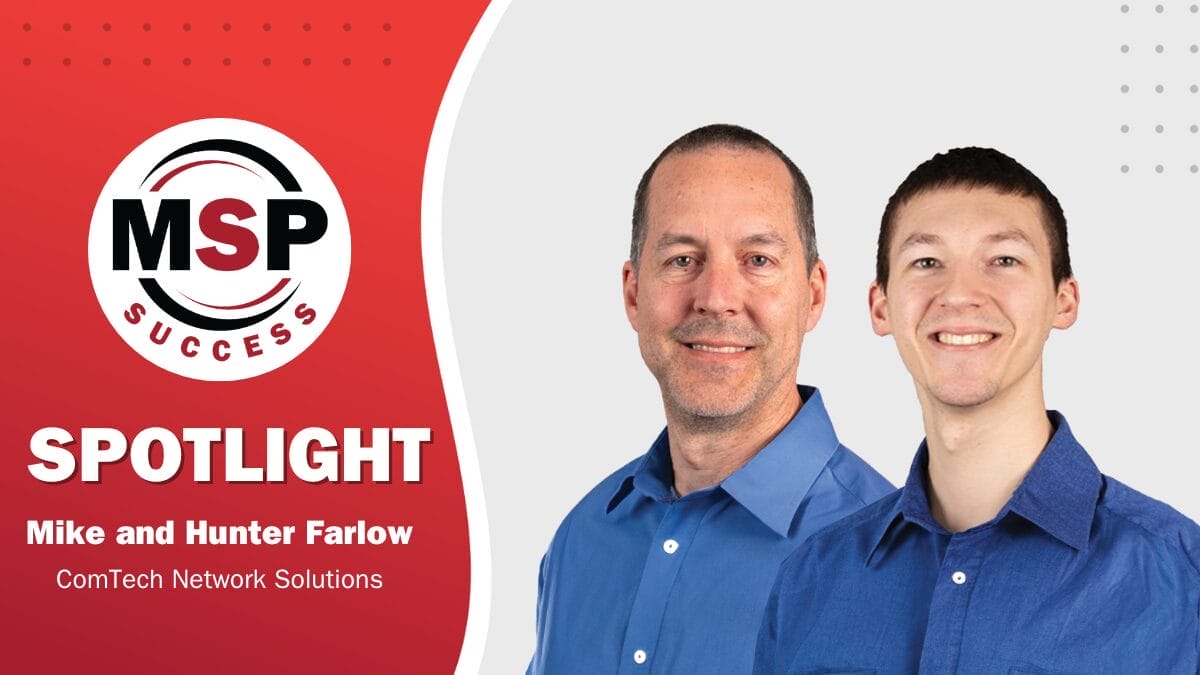Here’s a real secret the most successful MSPs and consulting firms know (and practice) that nearly every single struggling or mediocre MSP or consulting firm does not: We are very selective about what clients and opportunities we choose.
Willie Sutton, one of the most infamous bank robbers of all time, summed this up perfectly when asked why he robbed banks. He said, “Because that’s where the money is.”
All too often, small MSPs get caught up in the desperate, take-anyone approach to business: If you can fog a mirror and wave a dollar, I’ll take you as a client. Then they make the second mistake of not firing any clients out of fear of being unable to replace the income they represent, their desire to avoid the confrontation of firing them, or the guilt brought on by telling a client you need to pay us more or find another IT company. They’re “robbing” convenience stores, where there’s very little money kept in the cash register and the clerk is very likely to have a shotgun and a bad attitude.
Every successful MSP I know who raised themselves from struggle and poverty to big profits and growth went through a process of “trading up” their clients as they grew. They were unafraid to go upstream in the size of opportunities they went after as they grew in resources, knowledge base, and capabilities, always looking to go for clients that were slightly out of their comfort zone.
This is the secret to success many don’t talk about: only taking clients you can win with. You don’t get brownie points for taking difficult clients in impossible situations where success is highly unlikely or will at least take a lot of “fixing.” An MSP who comes to me looking to add a million in new MRR to their business but has zero marketing systems in place, no list, no marketing automation platform, no sales team to help pull on the oars, no sales process because they’ve lived off the low-hanging fruit of referrals for years (meaning they’ve never had to hunt), and are unwilling or unable to put adequate investment into new client acquisition is not someone I want as a private client. There’s just too much disrepair and too many unrealistic expectations to allow me to have guaranteed success. That’s why we have programs in place that are one-to-many; it allows me to develop clients to a point where I can take them on successfully as private consulting clients and have a good foundation to work with.
In fact, I maintain a “client selection criteria” checklist to remind me of what I need a client to have or be in order for the relationship to have any chance of being both profitable and enjoyable for both parties. Below are three of the seven things that are on my list. I would urge you to come up with your own list of criteria for what an ideal client is, and then hold yourself accountable by not taking anyone who doesn’t meet your criteria.
1. Size Of Opportunity.

A friend of mine consults restaurant owners on how to make more money with better marketing and adding catering as a profit center. He’s brilliant at it, and his systems work. The problem is, most restaurants have very, very low margins. A restaurant owner can have a busy weekend and only make a few thousand dollars. Therefore, if my friend shows them how to grow profits from $1,000 a week to $2,000 a week, essentially doubling their profits, the opportunity represented only adds up to a $52,000 increase over a year. Therefore, he’s limited in what he can charge if he sells to the average restaurant owner. If they pay him $2,200 a month for whatever it is he’s delivering, they lose money. Therefore, what he can charge is capped by the opportunity size relative to his customer.
Compare that to my business, where the average members’ MRR is roughly $2,200 with clients staying well over three years, bringing the total contract worth to $100,000 after upgrades, projects, and referrals are added in. If a client pays me $2,000 a month and only gets one new client a month, they’ve more than paid for the service. Compare that to a sponsor who can spend $10,000 a year or more with us because of the equity value we help them build by getting more MSPs onto their platforms.
As an MSP, you need to think about who you’re getting as a customer and what you’re delivering. Larger companies with greater cyber and compliance risk will naturally be willing to spend more to hire an MSP than a two-person realtor who works out of his spare bedroom. That’s not to say those are bad people to have as customers. The right model with a broad reach can represent a significant opportunity, but not for high-touch managed services.
2. Ability To Pay.

In sales, there are two primary hurdles you must overcome:
1) ability to buy, and 2) willingness to buy. Willingness to buy is difficult enough to overcome, so you don’t want to make matters worse by adding inability to buy to the list. For us, a small MSP without private equity funding is unlikely to have the ability to pay us $10,000 a month for high-touch digital marketing services. They might even be willing but just cannot swing the payment for several months as we ramp up inbound leads and sales. Therefore, I need to target people who have the ability to pay and don’t perceive our fees as “a lot of money.”
In selling outsourced IT, $10,000+ a month is completely within some clients’ budgets and not a reach. Others can’t imagine paying more than $1,000 a month for IT services. Knowing this, you need to be very selective in thinking about who you want to choose as your client, selecting people who can easily pay the fees you want to command. I would also add that you want your clients to not perceive what you charge as “a lot of money.” Clients who think they’re paying “top dollar” for support will be more needy and will likely complain more than someone who feels you’re right within the normal cost of good IT. Clients who think you’re “expensive” are more likely to fight you over recommendations and be hesitant to spend more, even if necessary. You don’t need that kind of burden when you’re attempting to provide quality services that clients need.
3. Willingness To Take Advice.

In the consulting business, we talk about clients needing to be “coachable” as a condition of a successful relationship. When we refer a client to one another, we are quick to add, “They’re coachable,” as a fancy way of saying they’ll actually take our advice. (Aside: this is a quality you want to find in all employees as well.) They have to be willing to take your advice on what needs to be done.
Being “coachable” is extremely important because clients who argue with you over every little recommendation are not only a liability but a giant, unproductive headache. Instead of spending your time on creating implementation plans, you’re having to waste time arguing with them over the approach, budget, strategy, etc., and often over things that they aren’t qualified to have an opinion on anyway.
If you succumb to their stubbornness and compromise your recommendations to satisfy their demands, you can practically guarantee things won’t go as well as planned and when that happens, they blame you. That’s why one of my strict criteria is that you take my advice and do things as I prescribe. After you write the check, this isn’t a negotiation. You need to make sure you’re taking the same stance with your client for the relationship to be truly productive.
As I’ve so often said, you want to set up your marketing systems so that you have an abundance of people willing and able to give you money. Only then can you truly be in a position where you can be more selective about who you take as a client. A line of people waiting to give you money stiffens the spine and (should) lower your threshold of tolerance for bad behavior and then you get to do your best work for the best clients. A guarantee of success for both you and your clients.









